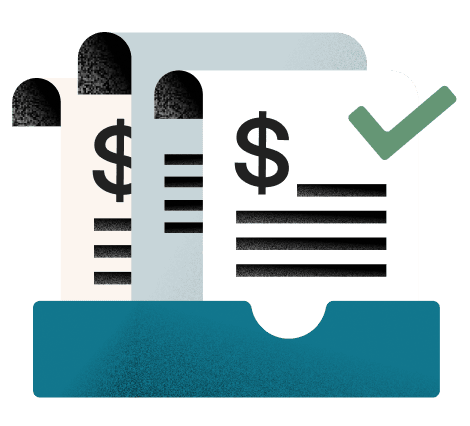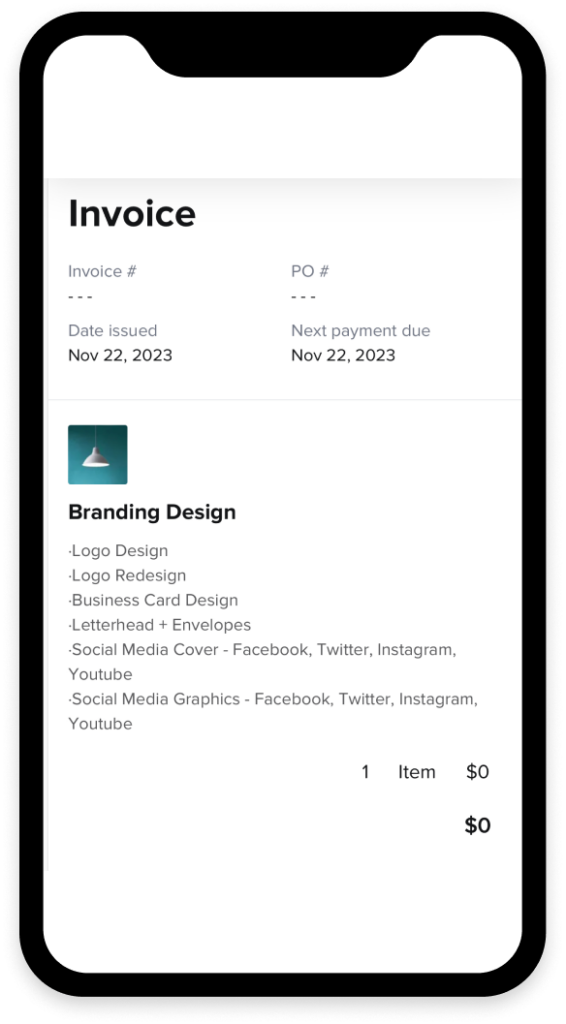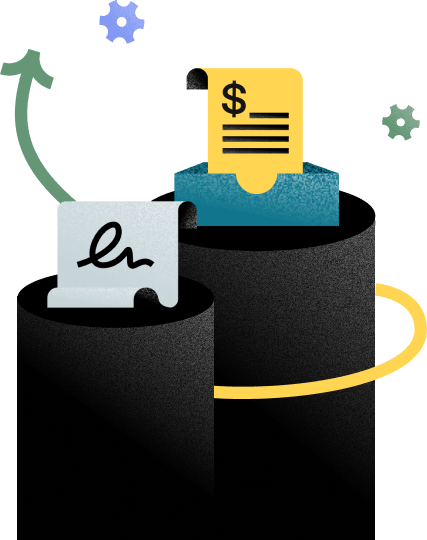Elevate your graphic design business with a billing process that underscores your professionalism and expedites payments. Learn how to make an invoice for graphic design work that also gets you paid fast.
As a graphic designer, your creative prowess is evident in every logo, layout, and webpage you craft. But beyond the visuals, there’s another art form equally crucial to your business success: professional invoicing. Knowing how to make an invoice for graphic design work not only ensures you get paid promptly but also represents your brand with the same level of professionalism that defines your designs.
For freelancers and small studios alike, invoices are more than mere requests for payment. They’re a key touchpoint in managing client relationships. A well-designed invoice reflects your attention to detail and commitment to seamless client interactions, setting a tone of trust and efficiency from a project’s start to final payment. As a graphic designer, your professionalism should shine through in your invoicing process.
Let’s dive into crafting invoices that mirror the excellence of your graphic design projects while facilitating a smooth payment process.
Jump to:
- Determine how much you should charge for graphic design work
- Use a graphic design invoice template
- Incorporate your branding in the template
- What important invoice information to include
- Determine your payment terms and structure
- Offer common payment methods
Determine how much you should charge for graphic design work
Before you can create your invoices, you need to determine what will go on them.
Cracking the code on what to charge for your graphic design work can be a complex decision. You’re not just selling designs, you’re providing solutions that enhance brand identities and communicate core messages.
To set a fair price, consider the type of project on your desk. Is it a logo that could become iconic or a full website overhaul requiring intricate UI design? Each demands its own market rate, from logos ranging between $100 and $5,000 to websites that might total anywhere from under $1,000 to over $15,000.
Additionally, your experience adds significant value. If you’ve got years of pixel-perfect projects under your belt or specialized skills in areas like typography or animation, these justify higher rates. Your location also plays into this equation. A designer based in New York might charge more due to the cost of living differences. You can do some industry benchmarking through designer aggregation sites and other similar platforms.
Pro tip
When discussing rates with clients, underscore your unique value through your swift turnaround times, accountability for high-quality work, and specialized skills that align with their projects. Make the conversation about benefits, not just costs, to help them see the true worth of your graphic design expertise.
Determine your payment terms and structure
As a graphic designer navigating the ebb and flow of projects, setting clear payment terms is the anchor that keeps your business steady. Beyond just getting paid, you need to establish trust and transparency with your clients. To start, consider asking for a deposit upfront. This not only secures commitment from both parties but also helps cover any initial expenses related to the project.
Milestone payments are another common practice that benefits you and the client. By breaking down the project into phases — conceptualization, design, revisions, final delivery, and so on — you can align payments with progress. This approach keeps cash flowing and reassures clients they’re getting what they pay for at each stage.
Some designers opt for full payment upon completion, especially for smaller projects or those with quicker turnarounds. Whichever structure you choose, ensure that it’s clearly outlined in your agreement. Payment schedules should include specific dates or project stages when payments are due.
Clear communication from the get-go about these expectations ensures there are no surprises later on. Clients appreciate knowing exactly what they’re paying for and when, and smoother transactions can pave the way for a professional rapport and future collaborations.
Use a graphic designer invoice template
When it’s time to get paid, that’s where the magic of a graphic design invoice template comes into play. It’s like having a master file that captures all the crucial billing elements with just a few clicks — no more drafting from scratch after every project. Graphic design invoice templates are all about efficiency. They’re set up for quick customization, allowing you to plug in project details and send them out promptly, keeping cash flow as steady as your creativity.
Consistency is another headliner in the world of professional invoices. When you use a template, your invoices send a subliminal message of reliability and organization. Plus, clients love familiarity. It makes processing and paying bills easier when they know exactly where to find the total due or payment terms.
What about those projects that break the mold? No problem. Your invoice can be as flexible as your designs, tailored to reflect different project scopes from minimalist logo work to comprehensive branding packages. Swap in specific service descriptions or adjust pricing structures, all without compromising on professionalism or brand identity. With templates, you’ve got an invoicing process that’s as polished and adaptable as your portfolio.
Incorporate your branding in the template
Think of your invoice not just as a bill, but as a brand ambassador. By weaving your unique branding into the invoice template, you transform a standard document into a personalized experience for your clients. This consistent branding enhances recognition and cements your professionalism with every transaction.
To seamlessly integrate your brand’s personality, start by adding your logo. This should be the beacon that catches the eye first. Next, harmonize the color scheme and fonts to match your other marketing materials. These touches reassure clients that they’re dealing with you and not just another faceless freelancer. And remember, subtlety is key. Keep it professional with a clean layout where your brand elements complement the vital details of the payment process rather than overshadow them.
What important invoice information should you include?
Your invoice needs to contain all the necessary details for clear communication and prompt payment. Here’s what to include:
- Description of services: Clearly itemize the services provided, along with any project-specific details.
- Pricing breakdown: Whether you charge by the hour or per project, outline your fees clearly for each service rendered.
- Client information: Personalize each invoice with the client’s name, company name (if applicable), and contact details.
- Invoice date: The issue date often also starts the countdown for payment deadlines.
- Payment terms: Specify due dates or expected timelines for payment.
- Invoice number: Assign a unique identifier to simplify tracking and organization on both ends.
- Tax details: If applicable, include tax identification numbers and specify any taxes applied.
By presenting these elements neatly and accurately, you reduce potential back-and-forth that could delay the payment process.
Offer common payment methods
In a highly digital and modernized world today, the ways in which you can get paid for your graphic design work are as varied and vibrant as your color palettes. As digital engagement deepens, it’s clear that offering a mix of payment methods isn’t just convenient, it’s expected. Reports indicate a significant leap in US consumers using multiple digital payment methods, from 45% to 58% between 2019 and 2020.
This surge highlights the need for flexibility in how you receive payments. Whether it’s through bank transfers, credit card payments, or mobile apps like PayPal and Venmo, each option offers its own set of benefits. Digital platforms often provide instant processing, which means faster access to your earnings and less time spent chasing down payments.
Pro tip
Flexible payment options aren’t just nice to have, they’re essential for attracting clients and keeping them in your orbit. Look for a platform that offers multiple payment methods without the need for integrations, like HoneyBook. With an all-in-one platform, you can enjoy invoicing and payment processing in one place.
An all-in-one clientflow platform for all your invoicing needs
As an expert graphic designer, you understand the power of well-executed work and its impact on client relationships. You’ve learned how to set competitive rates that honor your expertise, how to present yourself with professional invoices, and the necessity of offering a variety of payment options to accommodate client preferences.
Consider HoneyBook your partner in progress. It’s more than just an invoicing tool, it’s the ecosystem that nurtures your business growth with features tailored to your creative workflow. From crafting bespoke invoices that carry your brand identity to managing seamless communication and payments, HoneyBook is crafted to support service-oriented professionals like you.





